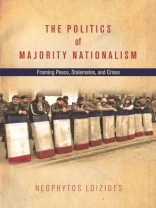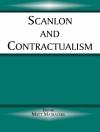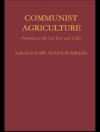What drives the politics of majority nationalism during crises, stalemates and peace mediations? In his innovative study of majority nationalism, Neophytos Loizides answers this important question by investigating how peacemakers succeed or fail in transforming the language of ethnic nationalism and war. The Politics of Majority Nationalism focuses on the contemporary politics of the ‘post-Ottoman neighborhood’ to explore conflict management in Greece and Turkey while extending its arguments to Serbia, Georgia and Ukraine. Drawing on systematic coding of parliamentary debates, new datasets and elite interviews, the book analyses and explains the under-emphasized linkages between institutions, symbols, and framing processes that enable or restrict the choice of peace. Emphasizing the constraints societies face when trapped in antagonistic frames, Loizides argues wisely mediated institutional arrangements can allow peacemaking to progress.
Table des matières
Contents and Abstracts
1
Politics of Majority Nationalism: Regional and Global Perspectives
chapter abstract
Chapter 1 situates Greek and Turkish nationalism within the broader picture of conflict-ridden national majorities. It provides key definitions and typologies; it integrates theories of nationalism, social movements and ethnic conflict, aiming to demonstrate major gaps in these literatures. It argues that majority nationalism and the variations in the response of majorities cannot be adequately explained simply by history or long-standing ethnic and religious rivalries. Moreover, theories of ethnic mobilization, which focus on single factor explanations, such as group status, relative (or actual or unexpected) deprivation, fear, and repression, offer an inadequate explanation of the politics of majority nationalism. Following Mc Adam, Tilly, and Tarrow (1997:152), this chapter argues for an integrated perspective in the study of majority nationalism, noting the conditions and constraints that shape protest, the institutions and mobilizing structures that support it, and the framing processes around which action is perceived and acted out.
2
Frames of Peace, Stalemates and Crises
chapter abstract
This chapter focuses on the study of pre-crisis framing (i.e. framing before the advent of a crisis or mediation). It asks how framing processes are contributing to subsequent crises, stalemates or peace processes. It addresses in more detail the following issues: the conceptualization of frames in general and their pre-crisis features in particular; the key differences between framing and the broader conceptual category of perception; the debate on the limits of plasticity of frames, or to what extent frames should correspond to pre-existing ‘perceived realities’; the two necessary component frames relating motives and opportunities; the detailed coding procedures of adversarial and non-adversarial frames. Drawing on the post-Ottoman successor states as a case study, the chapter also argues that the framing of false analogies with the past explains why societies in the region have generally failed in accommodating diversity through federalism and power-sharing.
3
Trapped in Nationalism? Symbolic Politics in Greece and the Macedonian Question
chapter abstract
Chapter 3 examines how adversarial framing on the Macedonian issue constrained a moderate government in Greece from capitalizing on its peace potential in the early 1990s when major demonstrations in Thessaloniki and Athens attracted at least a million people each. At the same time, it asks why conflicts related to Turkey or Albania received little attention despite ethnic antagonisms and an alleged ‘civilizational divide’ between Greece and its predominantly Muslim neighbors. Drawing evidence from the Hellenic Parliament, this chapter demonstrates that on Turkish and Albanian issues, a sizeable moderate camp championed reconciliation and compromise, maintaining a balance between hardliners and moderates in Greece. Even so, hardliners monopolized the framing of Greece’s Macedonian policies, thus shaping an early nationalist consensus. By adopting this hegemonic frame, mainstream Greek political elites prevented adaptation to new realities in the 1990s, obstructing a feasible peace agreement between the two nations.
4
Europe and (non) Accommodation in Turkey: Framing the Kurds, Greece and Syria
chapter abstract
Chapter 4 focuses on Turkey and the Kurdish question particularly in relation to the country’s neighbors. It highlights the 1998 Öcalan incident when hundreds of thousands of Turkish citizens joined mass nationalist mobilizations to protest against third countries (Syria, Italy and Greece) (allegedly) supporting the PKK (Kurdistan’s Workers Party). It examines how Turkish elites framed foreign governments and the PKK as the parties solely responsible for the Kurdish uprising, making any potential compromise unimaginable for the next two decades. At the same time the chapter examines the progress made by Turkey in reaching better relations with Greece leading to the Helsinki compromise in 1999. The chapter looks at parliamentary records and political discourse in the years preceding this crucial 1998-9 period to identify the framing of Turkey’s foreign policy, explain variation in foreign policy outcomes and Turkey’s subsequent reactions to the civil wars in Iraq and Syria.
5
Transforming Stalemates into Opportunities for Peace: Four ‘Success’ Stories
chapter abstract
Chapter 5 takes a different direction to the rest of the book by considering positive transformation in protracted conflicts. Theoretically informative cases of peace transformation are those which initially demonstrated high levels of entrenched ethnocentric framing, majority nationalist mobilization and human rights violations yet actors have nonetheless managed to catalyze a process of transformation. The chapter focuses on four examples of partial transformation in the Eastern Mediterranean region namely the Macedonian name dispute (i.e. the 1995 Interim Agreement), the 1999-earthquake diplomacy between Greece and Turkey; the ‘democratic opening’ of the AKP government in Turkey and finally successful confidence building measures in Cyprus. It argues that intelligently designed and mediated institutional frameworks could neutralize the impact of ethnonationalist frames or co-exist with them in a stable symbiotic relationship, allowing ethnic communities to adapt narratives at their own pace and in their preferred direction as the peace process evolves.
6
Serbia, Georgia and Ukraine: Post-Communist Transitions and Beyond
chapter abstract
Chapter 6 provides a broader comparative analysis of contentious politics and majority mobilization. The chapter summarizes the previous findings on Greece and Turkey and then goes on to apply the book’s arguments to three new cases from the Western Balkans, the Caucasus and Eastern Europe: the rise of Slobodan Milošević and Serbian protests over the status of Kosovo in 1987, the Georgian mobilization against its breakaway territories leading to the Russia-Georgia war of 2008 and the Ukrainian revolution of February 2014, ending with the ousting of President Viktor Yanukovych and Russian’s military interventions in Crimea and Eastern Ukraine. It demonstrates how pre-crisis framing had comparable effects in the five countries, despite differences in the economic performance, levels of democratization, military capacity, geopolitical alliances, cultural traditions (e.g. religion), and approaches to human rights.
A propos de l’auteur
Neophytos Loizides is a Reader in International Conflict Analysis at the University of Kent and a Leverhulme Research Fellow.












